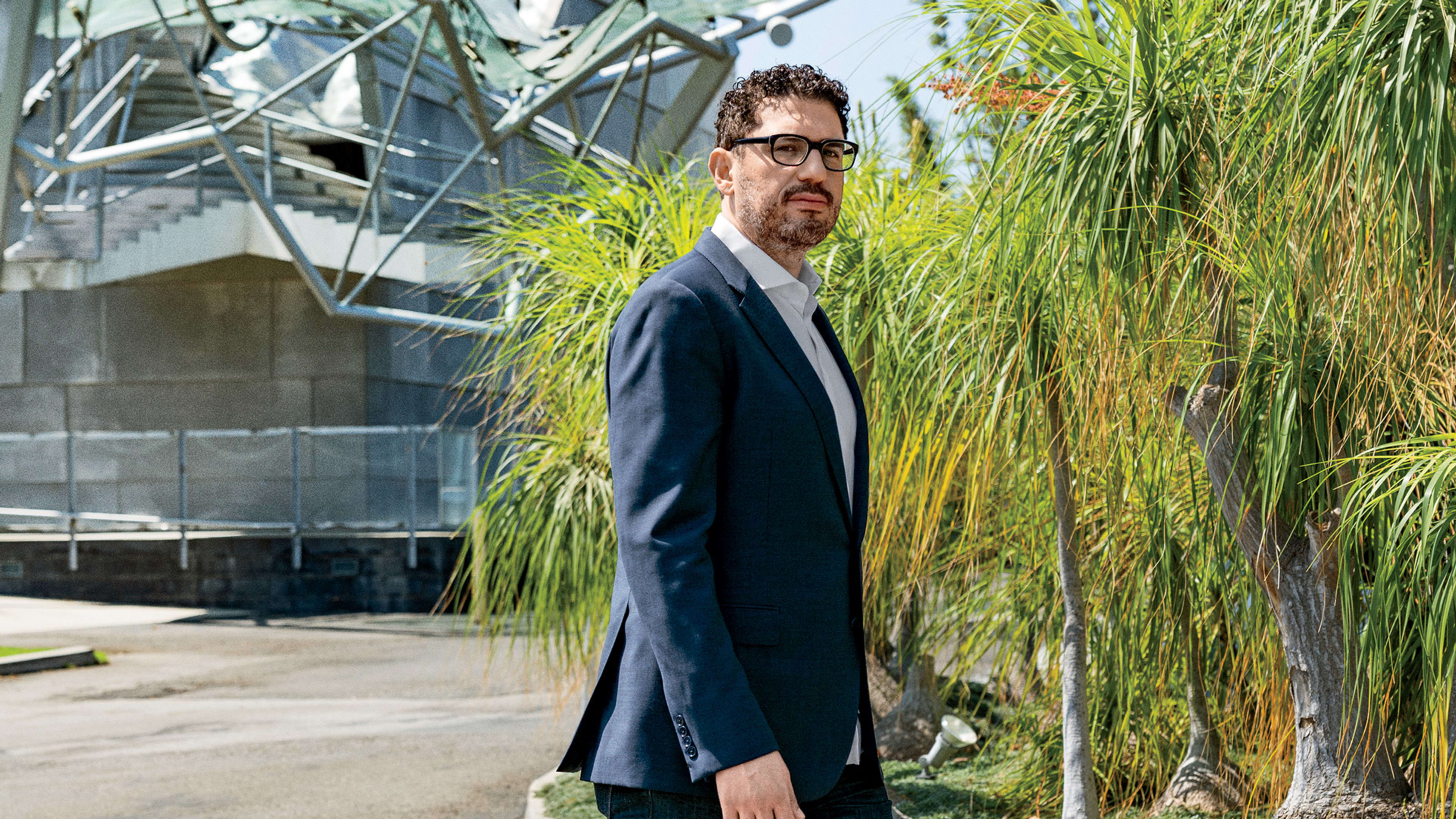“I’m controlling over anything I create,” says Sam Esmail. “I’m very precious about it.” The writer, director, and showrunner is used to constructing worlds purely of his own design, most successfully with his Golden Globe– and Peabody Award–winning USA Network series, Mr. Robot, a dizzying descent into the mind of a brilliant, paranoid hacker. Esmail’s latest project–the 10-episode Homecoming–is a psychological thriller that lands on Amazon in early November and stars Julia Roberts in her television debut. It also marks the first time he has directed someone else’s material, and a podcast no less. Translating an audio-driven narrative for the screen inspired Esmail to loosen his notoriously tight grip on creative control, while maintaining a firm grasp of his own vision. Here’s how he found the right balance:
State your mission
Before agreeing to take on any project, Esmail asks himself whether the story is entertaining and challenges his point of view. “The experience you’re going to take the audience on is as important as the story you’re trying to tell,” he says. “And that experience needs to excite me so much that I am desperate to share it.” When his agent approached him about turning Homecoming into a TV series, Esmail initially refused: He saw no reason to mess with something that worked so well in its original format. It was only when he listened to the podcast again that he found his mission: to use the camera to heighten the suspense and tension already present in the narrative. “I started to realize that there is another dimension to the story that we could do interesting things with, visually,” he says.
Find your method
To give Homecoming a fresh identity, Esmail leaned into the essential difference between radio and TV by showing more and telling less. The podcast had to rely on expository dialogue and speeches to move the plot along, which “killed the drama, suspense, and tension” of certain moments, Esmail says. For television, though, he used near-wordless scenes to propel the story, letting the audience experience the mystery right alongside the main characters. He also used cinematography to his advantage. To adapt a moment that, in the podcast, involved two characters simply talking about the place where they worked, Esmail moved his camera around in a long, sweeping take, “allowing the audience to peek in on the facility while eavesdropping on the conversation,” he says. “It [was] a great way to rhyme visuals with dialogue and expand the experience for the viewer.”
Watch your tone
For Esmail, using plot and imagery to strike the right mood is the hardest part of the creative process. He says the more experimental and abstract qualities of Mr. Robot were somewhat buried in the show’s first season. Eventually, they blossomed into the format-breaking episodes of seasons 2 and 3, which feature dream sequences and fragmented narratives. Esmail admits being tempted to sneak things from that world into Homecoming, given the shows’ similarities. “But we always stopped ourselves and challenged ourselves to say, Wait a minute: How does it work in this show?” For Homecoming, Esmail says he leaned heavily on the more technical aspects of filmmaking, like framing, camera movement, and lighting, to “add that layer of specificity that gives the show its unique vibe.” The result: a modern version of Hitchcock at his best.
Let it go
Esmail is cautious about micromanaging his crew–a situation he avoided by bringing his entire Mr. Robot staff from New York City to Los Angeles to work on Homecoming. “You have to have that core creative team around you who’s going to support your vision, and challenge and evolve it,” he says. He similarly deferred to the expertise of Homecoming podcast creators Eli Horowitz and Micah Bloomberg, who serve as showrunners for the TV series. “I was [never] going to take over writing duties,” he says. “I was a genuine fan of the original podcast, and I had the two masters of [it] with me. It would have been stupid for me to push back, or ignore that.”
Esmail brings a novel perspective to all his projects.
1. Comet, 2014: This romantic comedy–sci-fi film, which he wrote and directed, uses flashbacks to explore a tempestuous six-year relationship.
2. Mr. Robot, 2015–2019: Esmail went deep on hacker culture to create one of the most realistic portrayals of electronic meddling to hit the screen in his successful psychological-thriller TV series.
3. Metropolis: He is adapting the famous Fritz Lang dystopian film into a miniseries. The plot takes place in a society highly segregated along class lines, and follows two lovers as they question the system they live in.
Recognize your brand’s excellence by applying to this year’s Brands That Matter Awards before the early-rate deadline, May 3.
